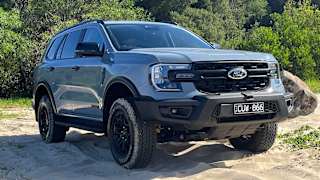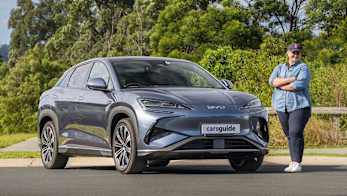Is this small crossover the next-generation replacement for the Juke in Australia?
Nissan Australia isn’t saying for now, but the completely redesigned Kicks has broken cover in North America this month, shaping up to be a more globally available proposition.
Result? This means there’s a chance that the competitively priced small SUV could be just what the brand needs against the popular Mazda CX-3 and best-selling MG ZS in this market.
Right now, the Juke – which is based on the existing Renault Captur – is a British designed, engineered and built boutique offering, with a high degree of advanced tech including a 1.0-litre three-cylinder turbo-petrol engine and dual-clutch transmission.
So, what does all this mean for Australia?
If the Kicks does get the green light, and at the pace Nissan moves that decision may still be another few months away, then we’re talking about a vehicle with more space, greater performance and a jump in safety tech compared to what came before.

Replacing the 2015 version, the second-generation Kicks has moved away from being an inexpensive entry-level crossover with limited active safety features to keep prices down, to a larger and more sophisticated vehicle that may be good enough to take on the likes of the Kia Seltos.
We’re talking almost Qashqai sized, which would be music to Nissan dealers’ ears.
Thanks to a switch in platforms from the old Almera-light car-based architecture to the new CMF-B underpinnings as found in the newly-matured Dacia Duster III, the North American Kicks II ditches the old sub-1.6-litre petrol engine powertrain options for a big 2.0-litre unit, driving the front or all-four wheels via a continuously variable transmission.
.jpg)
Other advances include an upgraded multimedia system, larger touchscreens, more ground clearance, a big increase in cargo capacity and improved noise/vibration/harshness measures.
It also gains greater driver-assist tech like broader autonomous emergency braking and lane-support systems functionality.
According to former Nissan Australia Managing Director, Adam Paterson, the previous Kicks was passed up for the more expensive Juke out of Europe because the latter was significantly more compatible with our Australian Design Rule (ADR) regulations, especially in terms of safety specification.

This is despite the fact that the Kicks, like Juke, has long been available in right-hand drive (RHD) and is produced in Thailand.
“You’re asking me about Kicks, which is available in both right- and left-hand drive,” Paterson started to explain to CarsGuide at the Nissan Qashqai e-Power launch in early March.
“Whichever market it is marketed globally as RHD, (we needed to ask ourselves) does it have similar safety regulatory requirements? If some of those are checked, because that development is needed for those other markets, (then it would make) the barrier of entry smaller.
“But the alignment to European standards is quite close compared to some of these other markets where Kicks is in, for example.”
.jpg)
That said, Paterson admitted Nissan Australia is always on the hunt for the right car for this market – as long as not too many modifications need to be made to gain regulatory approval.
“We’re always looking at our global product portfolio to understand what product can perform well in the Australian market, depending on what our demands are,” he said.
“This comes back to unique Australian regulation and what it takes to get vehicles to market. While the regulation is very similar to European standards, in most cases, there are some specific differences, that’s why ease-of-entry for European spec products to the Australian markets is easier than some other markets globally.
“That’s not the only reason why we focus on Juke, but that does allow us to bring that product to market more quickly and more easily than perhaps ones that are designed for markets where the regulatory requirements are completely different to ours."
.jpg)
Paterson added that while the Juke was the only small SUV option for Nissan Australia during the last decade, its premium specification does align with the brand’s positioning and aspirations in this market for the 2020s.
“Juke is a great entry product to the Nissan range – and when I say entry product, I don’t mean it’s inexpensive or not capable,” he said.
“I mean it’s our most affordable and most accessible product… it’s a good gateway to the Nissan range."
What would you rather – the Juke to continue or the larger Kicks? Let us know in the comments below.



.jpg)

.jpg)

.jpg)




.jpg)
.jpg)


.jpg)




.jpg)


.jpg)


.jpg)